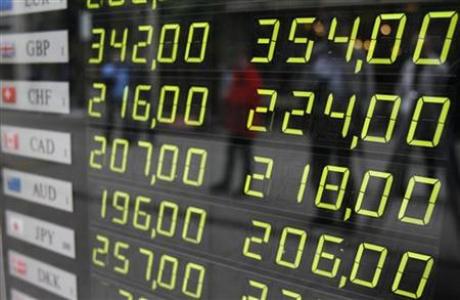
Forex rates or foreign currency exchange rates are the value of a foreign country’s currency with respect to the home or native country’s currency. The forex market is one of the largest markets in the globe with over 3 trillion worth of trading taking place on daily basis. The market is so popular because of two reasons, one that it is open 24 hours unlike other markets staying closed only from Friday to Sunday. Second reason being, the forex market is a real time market that is the same everywhere in the globe. Anyone from anywhere in the globe can trade on it. It is a truly an international market in that sense.
There are basically two types of currencies one, the free floating and the other, pegged. The first type is free to change continuously without any boundaries and is determined by demand and supply factors prevailing in the world market. The pegged currency, however, is one that is always fixed, and never alters, except for devaluation.
For example, soon after the end of the Second World War, most European countries maintained pegged foreign exchange rates with that of United States dollar and not until much later did this situation undergo a change. Similarly, the Chinese Yuan was also pegged to the US Dollar until 2005.
A term called real current exchange rate is what actually defines the forex rates between two countries. This real rate is such that it depends on the relative GDP of the two countries. How the GDP changes in the home country with respect to a base year, as opposed to the GDP change in the foreign country with respect to the same base year, determines what the real exchange rate is. Similarly, the Purchasing power parity also affects the real current exchange rate.
Coming back to the demand and supply theory of the forex rates, the values of a currency are indeed fixed by the forces of market demand. If there is a sudden surge in demand for the currency of a certain country then its value shall grow, while the opposite shall lead to a fall in its value. Speculative forces also determine the values of currencies. If a country’s interest rates are higher than usual then the speculative demand for its currency affects the forex rates of that country in a positive direction. Too much of this kind of demand leads to a sudden fall in foreign currency exchange rates as the currency circulating reaches a limit. Following this limit, the value of the currency shall go through a small dip to ultimately, settle at a previous value.
Knowing how the live forex rates change in real time is a great advantage to any forex market player as one can make an accurate prediction of the change in forex rates before it happens, thus making profits of the changes in the rate charts.
Comments (No)